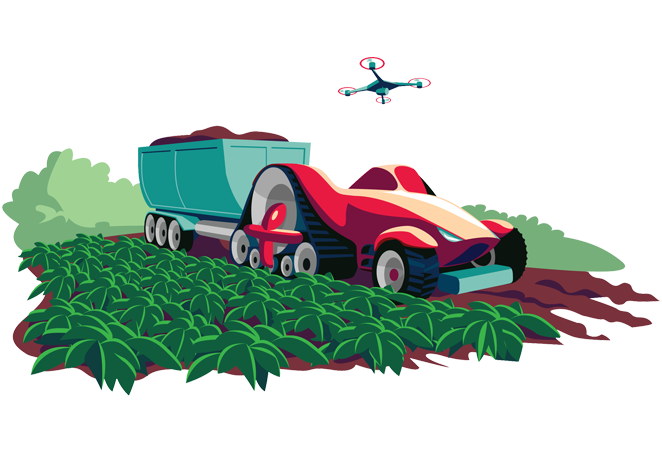Food security is a global issue, and at a time when there are fewer workers in the agriculture industry, farmers are growing especially concerned. Factor in climate change and increasingly high costs, and it can be difficult for farmers to meet consumer demands.

There are a few common methods that agriculture laborers use to increase productivity, including use of heavy machinery and chemical fertilizers. However, these options are hard on the environment and jeopardize the land’s ability to support crops in the future. Fortunately, agriculture technology has begun to expand the ways we can respond to the growing demand for affordable food sources.
Autonomous farm machinery is the newest innovation in the agriculture industry. These GPS-guided precision robotic crop planting machines are able to deposit crop seeds and collect plants once they mature, as well as strategically arrange biodiverse crops to enhance mutual growth. This essentially allows for the massive scaling of allotment gardeners to the level of a commercial farm. Not only does this technology hold significant implications for the future of food production, but it’s attempting to resolve some of the environmental costs of traditional farming.
The machines are coming
The main benefit of these self-driving robots for planting crops lies in their precision. Optimized for reducing product waste and loss while maximizing crop cultivation through close proximity planting, these machines are able to plant and harvest crops with more accuracy than the average human laborer.
Using machine learning and computer-vision, autonomous machines are also able to identify individual weeds for targeting to reduce the overapplication of agrochemicals, and minimize the amount of damaged or unharvested produce that becomes food waste. In turn, this process helps produce a higher yield each season.
In addition to efficiency and specificity, these robots also operate without the environmental toll of typical farm machinery. Heavy machinery for farming often results in soil erosion and carbon emissions. However, this new innovation aims to reduce these issues, as well as water usage and environmental harm related to agrochemicals.
Other technology changing the agriculture industry
Agriculture innovation companies have developed more than robots to address the global food insecurity crisis. Drones for mapping and surveying crops, algorithms designed to monitor soil health, and blockchain technology to trade and sell product are just a few of the additional innovations in the industry. These modern farming techniques are helping with issues like supply chain inefficiency, natural pests and infections, and efficient resource allocation. With the help of agricultural innovation, more fruit and vegetables will be able to make it to your local grocery store instead of being abandoned in the compost.
